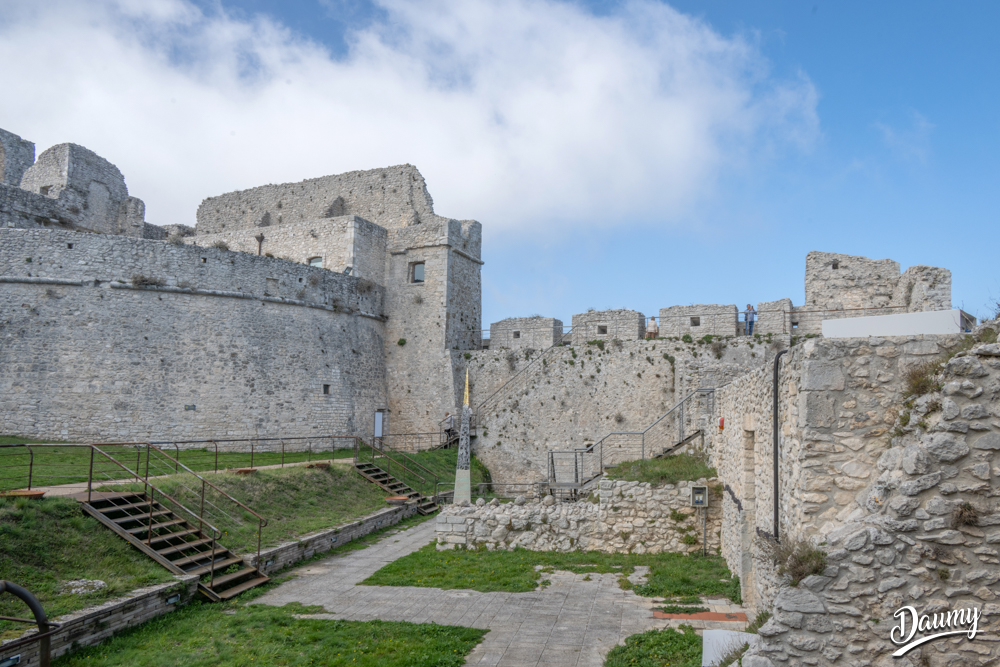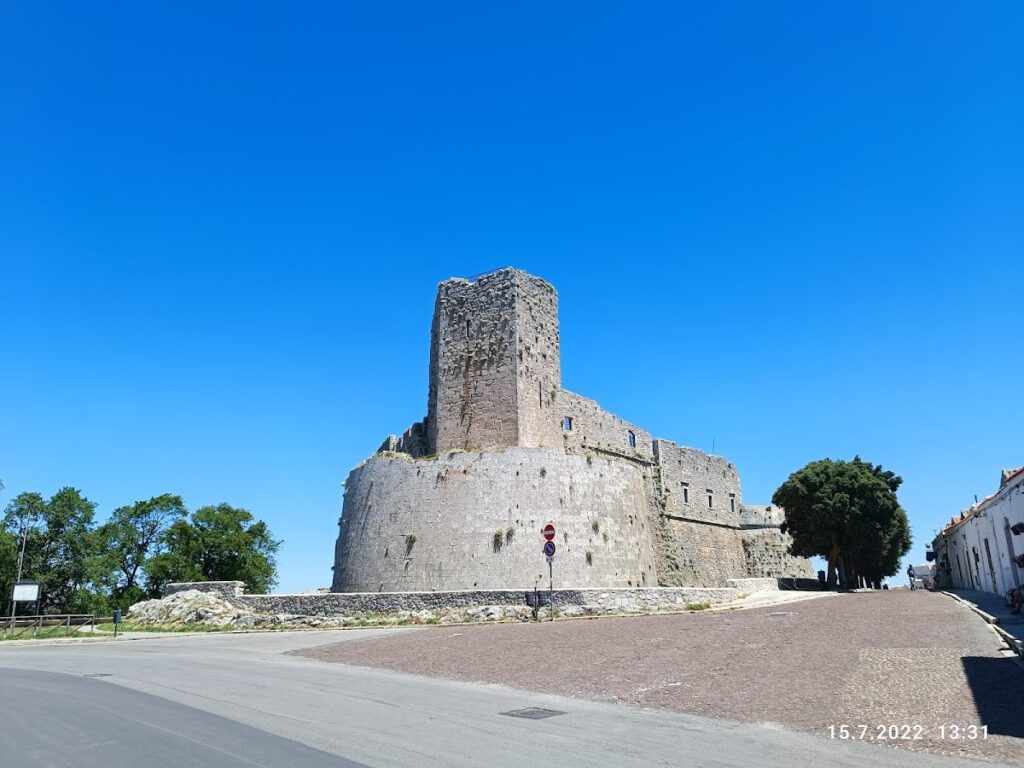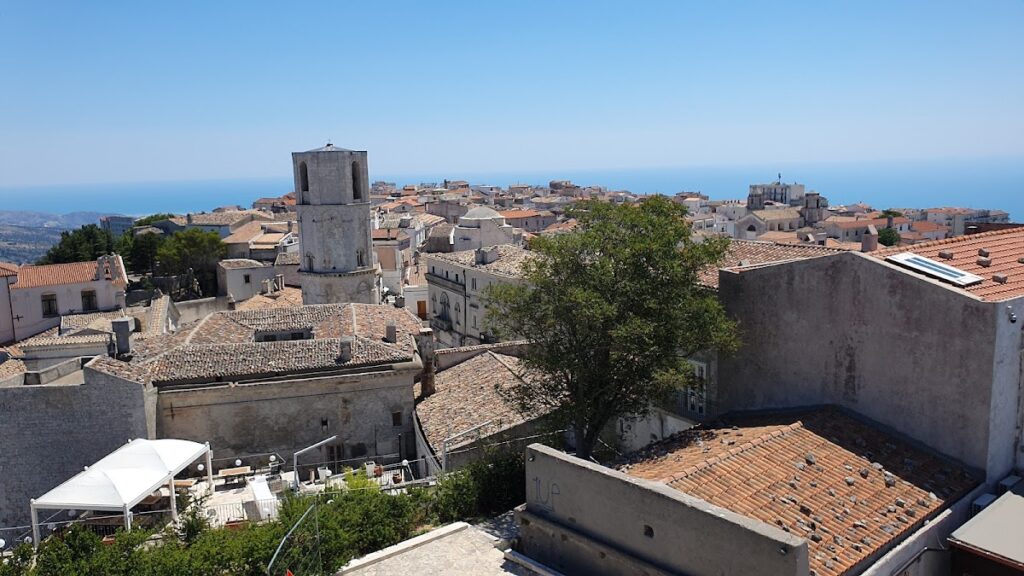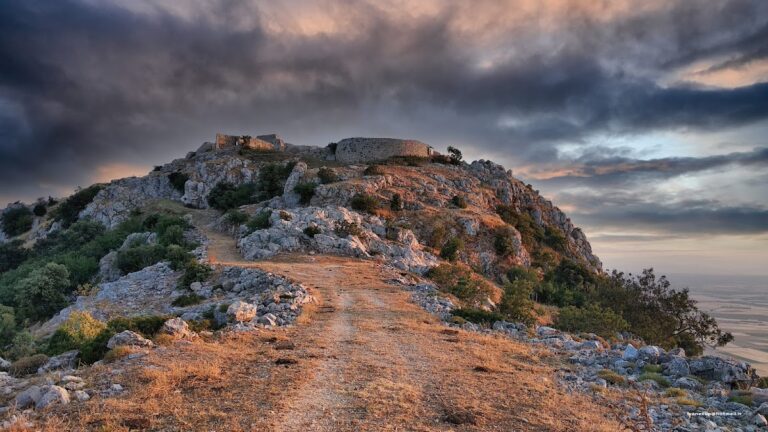Castello di Monte Sant’Angelo: A Historic Fortress in Italy
Visitor Information
Google Rating: 4.6
Popularity: Medium
Google Maps: View on Google Maps
Official Website: www.montesantangelo.it
Country: Italy
Civilization: Unclassified
Remains: Military
History
The Castello di Monte Sant’Angelo is located in the town of Monte Sant’Angelo in present-day Italy. Its origins trace back to the Byzantine era, when a fortified castrum occupied the site before the 9th century. The earliest documented fortress, known as the Castellum de Monte Gargano, was established around 837-838 under Orso I, the bishop of Benevento and Siponto.
During the Norman period, the castle gained prominence as the residence of the princes governing the territory known as the Honor Sancti Angeli. Notable figures such as Rainulf Drengot, the count of Aversa, made the castle their home. In the 11th century, Robert Guiscard enhanced the fortress by reconstructing its oldest section, the Tower of the Giants (Torre dei Giganti), and fortifying the surrounding town with defensive walls.
Under the rule of the Holy Roman Emperor Frederick II in the 13th century, the castle entered imperial possession. Frederick II gifted it to his third wife, Isabella of England, sister to King Henry III of England, and both resided there for a time. The castle acquired distinctive architectural features characteristic of Frederick’s style, including the construction of a vaulted chamber known as the Sala del Tesoro, used for grand occasions. Historical accounts also mention Frederick II meeting his mistress, Bianca Lancia, within the castle walls.
The Normans initially raised both the Torre dei Giganti and the quadrangular tower (Torre Quadra), while the Aragonese later added a mandorla-shaped tower and a defensive moat complex. The Angevins who followed took care to maintain the fortress but repurposed it chiefly as a state prison. Among the notable prisoners held were Philippa of Antioch, who died there in 1273, and Queen Joanna I of Naples, who may have met her death by assassination within its dungeons.
The castle also became the birthplace of Charles III of Durazzo, who would ascend to the thrones of Naples and Hungary. Ownership later passed to the Kastrioti family through George Kastrioti Skanderbeg, a military leader rewarded with the fief for his service to the Neapolitan king. Between 1491 and 1497, the renowned military engineer Francesco di Giorgio Martini transformed the castle to withstand gunpowder weapons, giving much of its present-day appearance.
In 1552, with imperial authorization from King Charles V, the Serra Grimaldi family acquired the fief and castle, retaining feudal control through the late 18th century. Other noble families, such as the Arcella and the Vischi, also exercised authority over it during this period. Finally, the municipality of Monte Sant’Angelo purchased the castle in the early 19th century, obtaining full ownership by 1810. Throughout the 20th century, various restoration projects sought to preserve its historical fabric.
Remains
The Castello di Monte Sant’Angelo is situated on the highest elevation of the town, commanding a strategic vantage point. Its layout includes robust defensive towers, fortified walls, and a variety of service and administrative structures arranged within its precincts. The dominant feature is the pentagonal Torre dei Giganti, dating to the 11th century. This tower rises approximately 18 meters high and has walls up to 3 meters thick, underscoring its defensive purpose. Below this tower lies an underground prison, historically infamous for its harsh conditions.
Within the castle complex are residential quarters that once accommodated the castellan (the governor of the castle), officials, and the garrison. Support buildings included stables, warehouses, cisterns for water storage, a mill, and a bakery, reflecting the self-sustaining role of the fortress. Crafts such as carpentry were carried out on-site, supported by dedicated workshops. The castle also contained a chapel and spaces for administration, illustrating its combination of military, domestic, and governmental functions.
Among its most remarkable internal spaces is the Sala del Tesoro, a large vaulted hall constructed in the 13th century during Frederick II’s reign. This chamber features a massive central pillar supporting the vaulted ceiling and includes a solitary window providing natural light. Historically, it served as a grand hall for banquets and public ceremonies, its robust design reflecting the Frederician architectural style.
The defensive system evolved through successive periods, with additions such as two truncated conical towers and an eastern bastion enhancing the castle’s fortifications. Masonry curtain walls lined with embrasures (openings for weapons) provided protection for defenders. The original outer defenses included a rampart and a moat crossed by a drawbridge, though this was later replaced by a fixed two-arched bridge leading to the main entrance.
Upon entering through the principal gate, a guard post lies to the right, while a sizable room to the left comprises stables and an ammunition depot, emphasizing the castle’s military character. Two doors on the left provide separate access outside the castle and to a staircase ascending to the top of a truncated conical tower situated above. The vestibule gives way to a courtyard approximately 21 meters in length and over 4 meters wide, opening into a large inner courtyard encircled by battlements. Two cylindrical towers stand on either side of the portal leading to the central part of the fortress, contributing to the layered defensive system.
Staircases in the courtyard grant access to the upper levels, where the Sala del Tesoro and the living areas of the castellan and courtiers are found. These well-preserved features reveal the castle’s blend of military strength and residential complexity, reflecting its varied role through centuries of governance, warfare, and incarceration.










